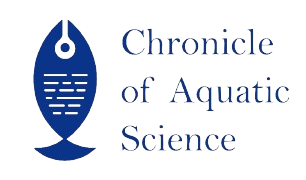| File | Action |
|---|---|
| Brahma et al., 2023 | Download |
- 919088951040 call us
- chronicleofaquaticscience@gmail.com Mail us
CoAS_V1IS2_03
Mini-review
A Mini-review on Biodiesel Production from Fish Waste
Ratul Brahma, Prasanta Murmu and Swarnadyuti Nath
Abstract
Fish processing plants generate billions of tonnes of fish waste each year. When these wastes are discharged into the environment, they produce pollutants that harm the soil. An alternate answer to the problem is to convert them into biofuel, pharmaceutical components, fertilizer, and feed. Biofuel is a popular notion that may be used as an alternative to conventional fuels. Biofuels are pollution-free and hence superior to conventional fuels. Organic waste, seaweed, and microalgae are used to make biofuels. The work done on fish wastes for biodiesel generation is motivated mostly by their benign and biodegradable characteristics. When compared to normal fuel or diesel, biodiesel emits less air pollutants, CO2, hydrocarbons, and other particles. The conversion process comprises the extraction of fish oil from fishing industry trash. The oil has been cleansed and refined. Transesterification and anaerobic digestion, with the inclusion of a catalyst, yield biodiesel and bio-gas. Various studies, including Fourier transform nuclear magnetic resonance (FT-NMR), gas chromatography mass spectrometry (GCMS), and proton nuclear magnetic resonance (H-NMR) examination, as well as best management practices (BMP) test, reveal that biofuels are efficiently converted and used.
Keywords
Biodiesel, Fatty acid methyl ester, Transesterification, Chromatography, Spectrometry
References
Ouanji, F., Nachid, M., Kacimi, M., Liotta, L. F., Puleo, F., & Ziyad, M. (2016, September). Small scale biodiesel synthesis from waste frying oil and crude methanol in Morocco. Chinese Journal of Chemical Engineering, 24(9), 1178–1185. https://doi.org/10.1016/j.cjche.2016.02 .008 El-Mashad, H. M., Zhang, R., & AvenaBustillos, R. J. (2008). A two- step process for biodiesel production from salmon oil. Biosystems Engineering, 99(2), 220– 227. https://doi.org/10.1016/j.biosystemsen g.2007.09.029 Costa, J., Almeida, M., Alvim-Ferraz, M., & Dias, J. (2013). Biodiesel production using oil from fish canning industry wastes. Energy Conversion and Management, 74, 17–23. https://doi.org/10.1016/j.enconman.20 13.04.032 Yahyaee, R., Ghobadian, B., & Najafi, G. (2013). Waste fish oil biodiesel as a source of renewable fuel in Iran. Renewable and Sustainable Energy Reviews, 17, 312–319. https://doi.org/10.1016/j.rser.2012.09. 025
Anand, M., Gobalakrishnan, M., Maruthupandy, M., & Suresh, S. (2015, March 1). Biodiesel Production from Mixed Crude Oil of Non-Edible Marine Fishes. Energy and Environment Focus, 4(1), 47–53. https://doi.org/10.1166/eef.2015.1154 Dorado, M. P., Ballesteros, E., Arnal, J. M., Gómez, J., & López Giménez, F. J. (2003, October 2). Testing Waste Olive Oil Methyl Ester as a Fuel in a Diesel Engine. Energy & Fuels, 17(6), 1560– 1565. https://doi.org/10.1021/ef0202485 Edlund, M., Visser, H., & Heitland, P. (2002). Analysis of biodiesel by argon– oxygen mixed-gas inductively coupled plasma optical emission spectrometry. J. Anal. At. Spectrom., 17(3), 232–235. https://doi.org/10.1039/b111476j Williams, J. B. (2002, June). Production of biodiesel in Europe— the markets. European Journal of Lipid Science and Technology, 104(6), 361–362. http://dx.doi.org/10.1002/1438- 9312(200206)104:6<361 Lapuerta, m., Armas, O., & Rodriguez fernandez, J. (2008). Effect of biodiesel fuels on diesel engine emissions. Progress in Energy and Combustion Science, 34(2), 198– 223.https://doi.org/10.1016/j.pecs.200 7.07. 001 Wu, Y. P. G., Lin, Y. F., & Chang, C. T. (2007) Combustion characteristics of fatty acid methyl esters derived from recycled cooking oil. Fuel, 86(17– 18),2810- 2816.https://doi.org/10.1016/j.fuel.20 07.02. 029 Lin, C. Y., & Li, R. J. (2009, January). Fuel properties of biodiesel produced from the crude fish oil from the soap stock of marine fish. Fuel Processing Technology, 90(1), 130–136. https://doi.org/10.1016/j.fuproc.2008. 08.002
- Published online
- 31st July, 2023
How to Cite the Article
Brahma et al., (2023) A Minireview on Biodiesel Production from Fish Waste. Chronicle of Aquatic Science 1(2): 16-20
Copyright
This is an open-access article distributed under the terms of the Creative Commons Attribution License (CC BY). The use, distribution or reproduction in other forums is permitted, provided the original author(s) and the copyright owner(s) are credited and that the original publication in this journal is cited, in accordance with accepted academic practice. No use, distribution or reproduction is permitted which does not comply with these terms.

Brahma et al., 2023


